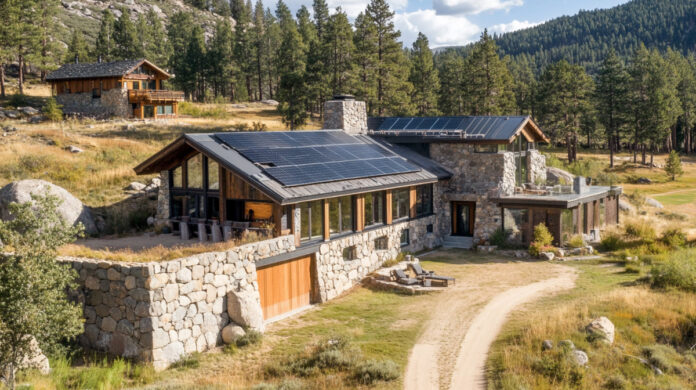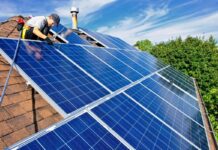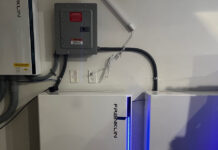
We received our first electric bill since the new solar power system was installed. Our electric power consumption was 125 kilowatt hours (kWh), down from 935 for the same month in 2023. That’s a drop of 84 percent.
If you think that means our electric bill dropped 84 percent, you would be mistaken. It only dropped 63 percent. In a fair world, it should drop 84 percent, but the utilities have rules in place to stop that from happening. In short, they stack the deck in their favor.
For example, we pay a flat fee, or service charge, just for the honor of connecting to the grid. They get paid whether we use 2,000 kWh or no electricity at all. Then there is the minimum monthly charge, which you pay if you don’t consume enough electricity.
This is why you should not believe a solar power salesperson who tells you that you won’t have an electric bill or will recoup your investment in 10 or 12 years. That may (and I stress may) have been true at one time, but it is no longer the case in most instances. The utility companies have policies in place to ensure they always get paid. The only way to avoid an electric bill is to cancel your service and disconnect from the grid or never connect to it in the first place. We aren’t ready to go there yet.
Versus our Prior Home
I dug out an electric bill for from our old house. We used 2,257 kWh in our prior house in July 2020. Of course, it was in a different state at a lower elevation where daytime temperatures were much higher. It also had three air conditioning units while our current, smaller home has only one. Electricity was also less expensive back then, before the effects of inflation kicked in.
We cut our electrical expenditures by more than 50 percent when we moved. (Just another example of how moving can save you money.) Then we cut it 84 percent more. Somewhere, some environmentalist should be thrilled.
One of my apps tells me we have saved 2,400 pounds in CO2 emissions so far, the equivalent of planting 18 trees. If you live in an apartment building, planting 18 trees might sound impressive. To me, it’s laughable because we have more than 12,000 trees on our acreage. Instead of planting trees, we go around in the spring and pull up dozens of small trees that sprouted in places where we don’t want trees to grow. We also cut trees for firewood.
Still, I expect our solar equipment provider is published statistics in their annual report bragging about how much CO2 they saved. Somewhere, some DEI investor living in a concrete city block is thrilled that the solar power company they invested in is saving the trees. Of course, the report won’t discuss how much copper, aluminum, lithium, and silver had to be mined and smelted at a tremendous environmental cost to produce our panels, inverters, batteries, and cable. (Oops! I’m not supposed to say that out loud.)
Can we Lower our Bill Further?
Because the month started before we received permission to operate, this bill does not reflect the power we sold back to the utility. We were using the power we produced and storing the power we produced for use at night, but they didn’t turn on the two-way functionality of the meter until late in the month. As a result, we weren’t getting paid for the excess power we produced. Our hope is these credits will offset some of the flat rate costs.
We’ve had two days in the past week where we produced more than 50 kWh in a day, far more than we use. In the winter, when the sun shines fewer hours, we may not have enough electricity to sell back to the utility, but in April through September, we hope to come out ahead. Time will tell.
Having an app that allows you to monitor your power consumption on a real-time basis drives home how much power you use and what you can do to conserve.
More Outages
The remnants of Hurricane Debby were far less ferocious on our mountain than expected. While we had some rain, the winds were mild and didn’t cause any power outages. We have experienced three other power outages since the system was installed. In all three cases ran our house ran just fine on battery power during those outages. As an alternative to a whole-house generator, the solar power system is a success. My wife is pleased, and I consider that a win.
During one outage, the smart circuits operated as planned and shut down the AC when the battery power dropped to its pre-set level. Good to know that functionality works as expected.
One time it went out when my wife was using the stove. She wanted to know if she could finish cooking. Of course, I told her, just don’t start baking something in the oven or run the dryer. With common sense precautions like that, our solar power should be more than sufficient for all but the very worst outages.
Internet Issues
In all three power outages, we lost Internet service. I called their technical support line and the customer service rep, located in another state, was clueless. He wasn’t even aware that the Internet went down in a power outage. (Maybe it doesn’t where he lives, but it does here.) I’m going to keep working on this issue. The FCC requires that all 911 calls go through, so I will use that as my cudgel to “encourage” our ISP to provide Internet access/VOIP phone service even if the utility power is out. I’m not holding my breath. This just be a part of mountain living that we have to accept.
Another option would be to switch to Starlink, but it’s more expensive than our current service provider. Of course, they do have a “mini roam” service that is only $50 a month, but I don’t want to “waste” $50 a month paying for something I am already supposed to have. I don’t see that happening unless the lack of internet becomes a huge issue. If any of you are on Starlink, leave a comment below telling me how its working for you.






